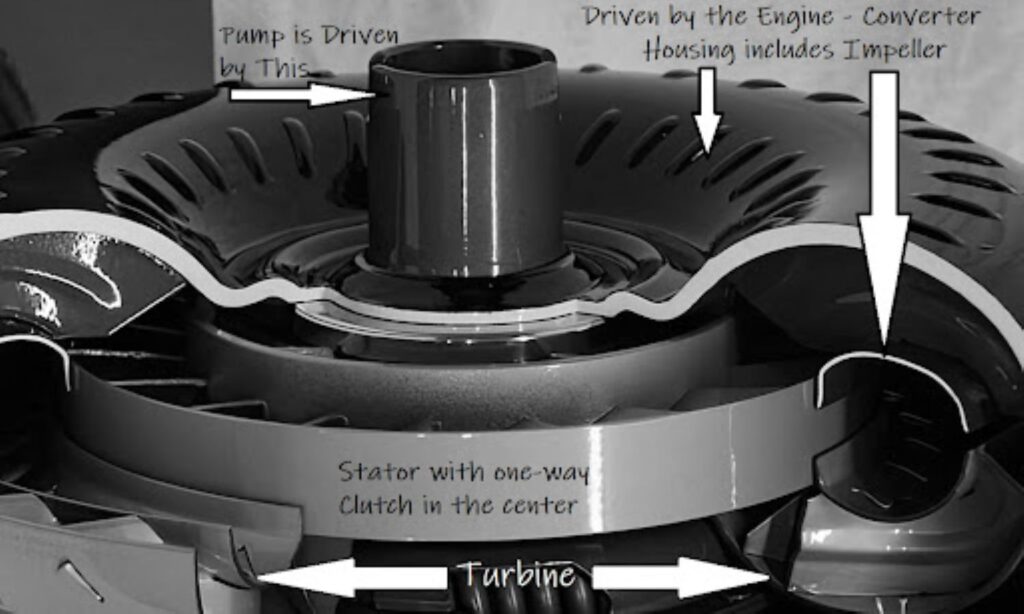The transmission is one of the vehicle systems designed to last up to more than a hundred thousand miles without needing major repairs. However, there are cases where the transmission may fail prematurely and force you to have it rebuilt or replaced.
How Long Do Transmissions Last?
A manual transmission generally lasts anywhere between 100,000 and 150,000 miles. With proper maintenance, it can even last up to 200,000 miles without needing anything other than a clutch replacement.
Meanwhile, an automatic transmission has a service life of 80,000 to 150,000 miles. It can also last up to 200,000 miles or more if you stick to its maintenance schedule and observe good driving habits.

Symptoms of a Failing Transmission
A failing transmission is the last thing drivers want to deal with. Here are some signs you might want to look out for that could point to a failing transmission.
Illuminated Check Engine Light
An illuminated check engine light can mean almost anything. It can be because of something simple like a loose gas cap or a more serious problem like a failing transmission.
Once this light pops up on your dash, don’t leave it alone for too long. Have a trained professional check your vehicle right away.
Unresponsiveness
Hesitation or refusal to shift into the proper gear is a telltale sign of transmission trouble.
If you’re driving an automatic, you might notice a slight delay when shifting from drive to park or vice versa.
Meanwhile, manual transmissions show a lack of response when the revving of the engine’s RPMs isn’t in sync with the actual vehicle speed.
If you’re driving a manual vehicle with transmission issues, you might notice that you’re accelerating at a slower rate than what the engine sound is implying.
Unusual Noises
Humming, buzzing, whining, or clunking noises are common indicators of automatic transmission failure.
Manual transmissions, on the other hand, are more likely to produce harsh mechanical noises like clunking and grinding.
These unusual noises could come from anywhere, including damaged planetary gears or a set of bad bearings.
If you think your vehicle is producing any of these noises, it’s best to bring it to a trained professional to get an accurate diagnosis.

Dragging Clutch
For manual transmission vehicles, a dragging clutch is a common indicator of transmission failure.
This occurs when the clutch and flywheel remain engaged even when the clutch pedal is depressed, making it difficult to switch gears.
Fluid Leaks
A leaking transmission fluid can cause the transmission to break down because of oil starvation.
You should also watch out for a burning smell caused by the fluid leak, as well as a pool of bright red fluid underneath your vehicle.
Transmission Won’t Stay in Gear
If your vehicle won’t budge even after shifting into gear, you might be dealing with problems like a low transmission fluid level, shifter cable issues, or a faulty valve body.
Transmission Rebuild
A bad transmission doesn’t mean you need to buy a new one right away.
In some cases, a rebuild is doable, which is the cheaper alternative to buying a brand-new transmission.
A transmission rebuild typically involves dismantling the old transmission and replacing damaged seals and gaskets.
The process will also involve repairing any electrical faults that might have occurred.
How Long Does a Rebuilt Transmission Last?
A rebuilt transmission can last anywhere between 30,000 to 50,000 miles. Along with regular maintenance, it might even last up to 120,000 miles.
Taking Care of Your Transmission
The saying “prevention is better than cure” also applies to your vehicle.
By observing good habits, you’ll be able to steer clear of transmission troubles and might even extend your vehicle’s service life.
Here are some ways you can make the most out of your transmission.
Change Gears Properly
Recklessly shifting gears (i.e. shifting into reverse while driving) can cause components to wear out faster than normal and damage the gearbox.
Keep Your Engine Cool
The cooling system prevents the transmission fluid from getting too hot, so keep an eye on your vehicle’s coolant levels when servicing your engine.
Regularly Inspect the Transmission Fluid
Like engine oil, transmission fluid helps keep various components lubricated and minimizes friction between moving parts.
Make sure your vehicle has enough transmission fluid by following the protocols stated in your owner’s manual.
Follow the “Severe Use” Replacement Schedule
If you regularly drive in city traffic, tow heavy loads and trailers, and drive in extremely hot temperatures, you might need to check your transmission fluid often and have it replaced more frequently than normal.
What Does the Transmission Do?
The transmission lets the engine increase its speed even when the vehicle’s speed is low.
Small automobiles weigh about 2,500 pounds. Large automobiles weigh about 4,200 pounds, while SUVs and trucks weigh from 3,500 to over 6,000 pounds. But even the most powerful engine can’t move the vehicle a single inch without the engine’s torque being multiplied, first in the transmission’s torque converter, and then through the transmission and final drive that delivers that multiplied torque to the drive wheels. So how does the torque converter multiply torque?
How the Torque Converter Multiplies Torque
The torque converter’s outer housing is bolted to the outer edges of a round flex plate that is bolted on at its center with a circle of bolts to the engine’s crankshaft. This is called a “flex plate” because it must flex as the torque converter expands with increased fluid pressure.
In the torque converter housing, there is a turbine that is connected to the transmission input shaft and a three-piece stator with a one-way clutch.
This stator splines onto an immovable part of the transmission fluid pump aptly called a “stator support.” That stator has vanes designed to direct fluid flow between the impeller (which is part of the torque converter housing) and the turbine (which is connected to the transmission input shaft).
The torque converter housing’s transmission side is connected with slots or flats to the center gear of the transmission fluid pump so that as long as the engine is running, the pump is drawing fluid from the transmission fluid reservoir (through a filter) to provide fluid pressure and volume.
As the engine spins the torque converter housing with its impeller, the torque converter housing is immediately filled and pressurized with fluid pump, and the blades of the spinning impeller begin to throw fluid against the turbine, which tries to turn the transmission input shaft. As more torque and speed are applied by the engine, more torque is delivered to the turbine shaft and the transmission.
The Stator
As the fluid cycles between the impeller and the turbine, it must be redirected for maximum converter efficiency, and that’s what the stator does. Because of the way the stator redirects the fluid, it naturally multiplies the torque. The stator one way clutch is locked at this point, but as the turbine delivers torque through the transmission’s planetary gear sets to the output shaft, the stator begins to spin freely.
Stall Speed
If the brakes are locked with the transmission in gear and the accelerator is depressed, the engine will reach what is known as “stall speed,” which mens the engine speed will stop climbing because of the torque converter’s internal fluid reaction. Different vehicles have different published stall speeds. But don’t check your stall speed because it can overheat the transmission if you don’t know how to do it right.
If the brakes are locked with the transmission in gear and the accelerator is depressed, the engine will reach what is known as “stall speed,” which mens the engine speed will stop climbing because of the torque converter’s internal fluid reaction. Different vehicles have different published stall speeds. But don’t check your stall speed because it can overheat the transmission if you don’t know how to do it right.
–Richard McCuistian, ASE Certified Master Automobile Technician
A mechanic will check the transmission’s stall speed and compare it with specs to determine whether the stator’s one-way clutch has failed. However, there are engine-related factors that can also affect stall speed. A lower than normal stall speed indicates a problem.
Inside the transmission, there are planetary gear sets, and the different gear ranges (from low to high gear) are achieved by the holding or driving of the various parts of these gear sets.
The transmission output is then delivered to a pinion gear, which drives the ring gear and its differential, providing torque to the drive wheels. So, the torque is multiplied through the gear ranges in the transmission or transaxle and then it’s multiplied again by the ring gear and pinion.
If you pull heavy loads, your transmission will need more frequent fluid changes, so be aware of that.

Key Takeaways
Manufacturers design transmissions to last the lifespan of your vehicle.
A few things could affect their service life. These include your driving habits and dedication to your vehicle’s scheduled maintenance.
Habits like properly changing gears, frequently inspecting the transmission fluid, and keeping the cooling system in good shape are some ways to get the most out of your transmission.
Lastly, a failing transmission (in some cases) is still salvageable by undergoing a rebuild.
A rebuilt transmission is projected to have a shorter service life than a new one, but proper maintenance can add thousands of miles to its lifespan.
Get a High-Quality Clutch Kit
The clutch connects and disconnects the transmission to the engine. If the clutch fails, it’s best to stop driving your vehicle and avoid additional transmission problems until you can repair or replace the faulty part. Get all the parts you need to fix the clutch by ordering a clutch kit from CarParts.com.
At CarParts.com, we carry a wide selection of high-quality auto parts and accessories, such as a clutch kit. Plug your car’s year, make, model, and engine into our website’s built-in vehicle selector to find a product that fits your needs. We only source our clutch kits from trustworthy manufacturers, ensuring you get the quality you deserve. If you live in the continental US and place your order before noon ET, your new clutch kit will arrive at your doorstep in several business days.
When you need an affordable yet reliable clutch kit, look no further than CarParts.com. Check out our selection of high-grade clutch kits and enjoy great discounts today!
Any information provided on this Website is for informational purposes only and is not intended to replace consultation with a professional mechanic. The accuracy and timeliness of the information may change from the time of publication.































